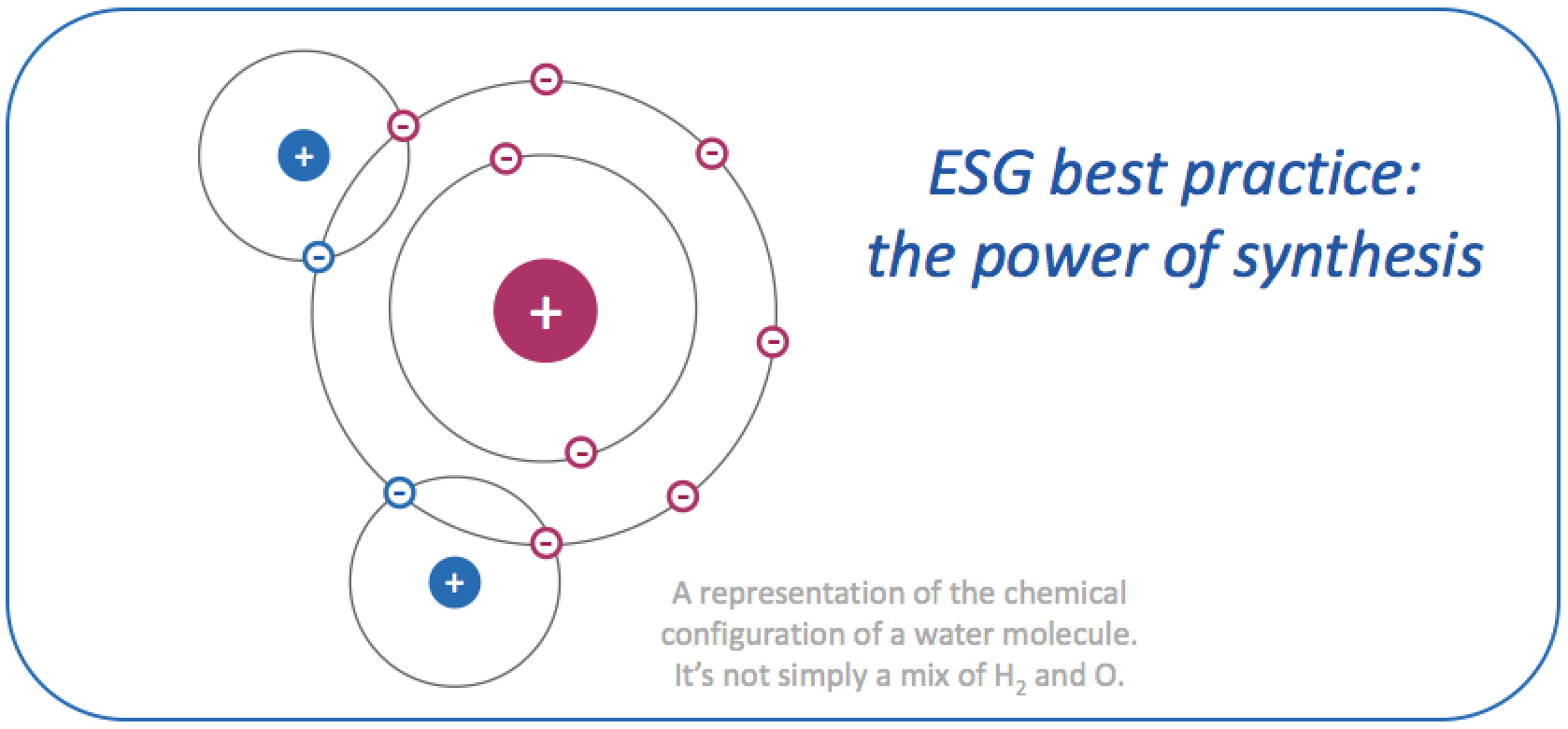
Some say that best practice in ESG investing is all about making a difference. It’s about aligning the financial system with a more sustainable economic model, about combating greenwashing, about having an impact.
Others say that best practice in ESG investing is all about remembering whose money it is. For these, it’s about ensuring that beneficiaries’ financial interests are not compromised. It’s about protecting savers.
Each point of view is reasonable enough: best practice in ESG investing clearly involves both of those things. But neither perspective fully captures the real essence of the challenge. For me, best practice in ESG investing lies in how you deal with the combination of the two, in the forging of a true synthesis.
Strengthening, not weakening, each tradition
It’s widely recognized that ESG is moving from being an investment niche area into becoming truly mainstream.
In basic form, this can be done by splicing together the standard investment tradition with the socially responsible and impact investing traditions, hoping not to do too much damage to the integrity of either in the process.
Best practice, though, is more than that. Best practice is capable of strengthening each tradition, building something different from the average or a sum of the parts.
This is synthesis. Synthesis creates something new; as when hydrogen and oxygen come together to form water. Water has its own characteristics, not simply an average of the characteristics of its component elements. Likewise, best practice in ESG investing is more than simply adding a few environmental or social considerations into the investment process and beefing up the stewardship efforts, all while maintaining a commitment to delivering the best financial outcomes for clients. To be fair, those steps – properly executed – do represent good practice. But best practice is deeper than that.
A true synthesis strengthens the socially responsible investing tradition by giving it a bigger platform, bringing scale, rigor and resources. It makes sustainability a bigger factor in financial decisions, reinforcing the incentive to take responsibility for the consequences of our activity.
Synthesis strengthens also the standard investment tradition, offering a more robust, more durable foundation. It shifts attention from the short term to the long term, from the narrow picture to the big picture. It re-establishes the legitimacy of the industry, and supplies a demonstrable purpose that the business-is-only-about-making-money model had lost.
For example: sustainability preferences
Consider, for example, how firms reflect client objectives in their advice and products.
The old approach was built around an investor’s financial circumstances and risk tolerance. The client’s environmental or social preferences, if considered at all, might be regarded as a constraint; leading to the avoidance of certain types of investment, or tweaking the final stages of portfolio construction to incorporate non-financial goals alongside financial as tie-breakers, for example.
But ESG considerations are no longer peripheral to sound investment analysis, they are central to it. Leading firms won’t include any investment in their portfolio without having assessed the environmental and social angle. Depending on the type of investment, this might mean an analysis of the risks and the return implications of the investment’s impact on climate or biodiversity or health and safety or customer privacy or human rights or any number of other considerations.
And because that analysis is embedded in the investment process, client sustainability preferences can also be embedded throughout, not simply lumped on as a constraint at the end of the process. Best practice around client preferences can weave ESG into the fabric of advice models, product strategy and reporting.
Messy, but worthwhile
Making this synthesis happen is not necessarily simple; best practice rarely is. It requires willingness to change. There are ambiguities and uncertainty to deal with. There will be disagreements about principles and disagreements about tactics. So it might get messy. But if the movement of ESG into the investment mainstream is to be worthwhile, the synthesis needs to happen.
And that – in my opinion – is what best practice in ESG investing is really about.